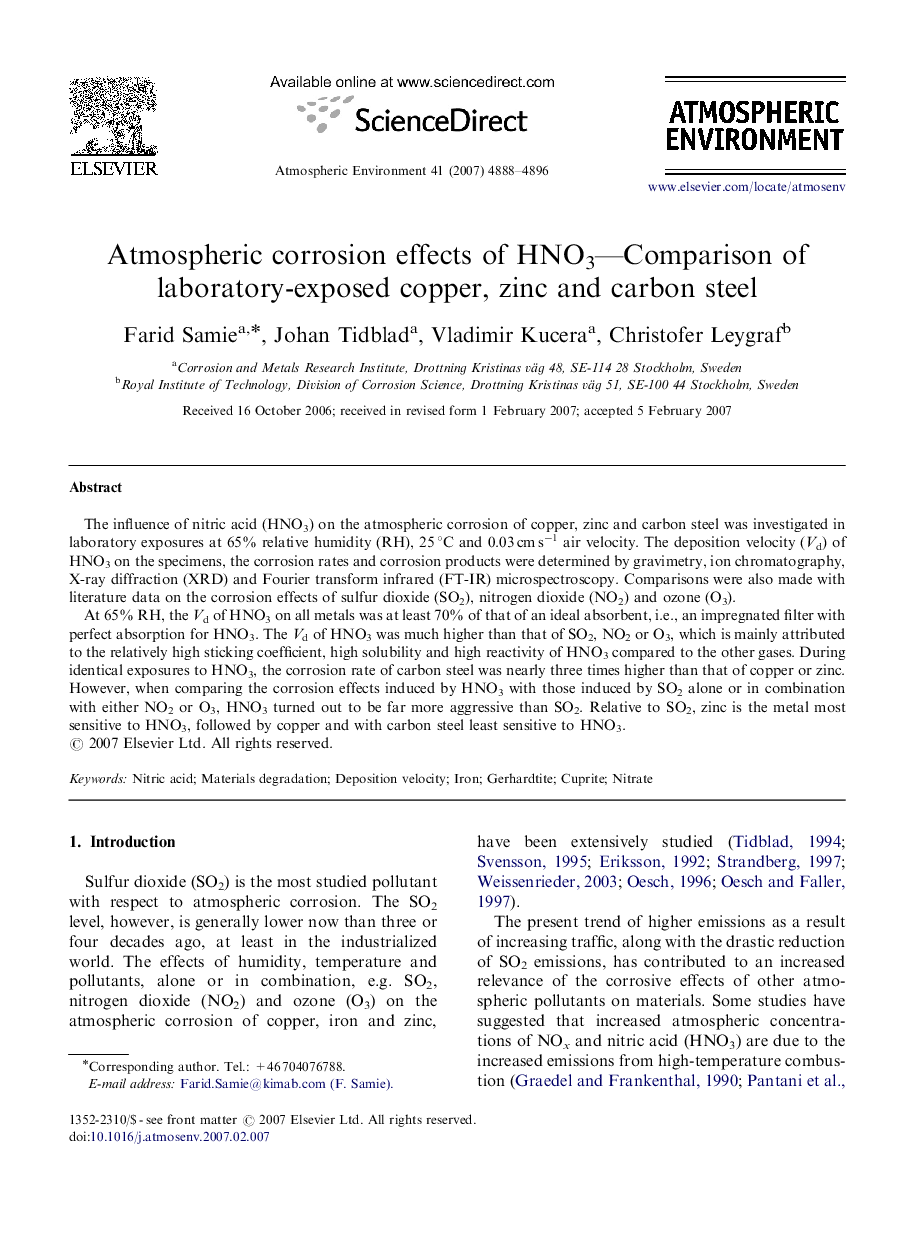| کد مقاله | کد نشریه | سال انتشار | مقاله انگلیسی | نسخه تمام متن |
|---|---|---|---|---|
| 4443577 | 1311199 | 2007 | 9 صفحه PDF | دانلود رایگان |

The influence of nitric acid (HNO3) on the atmospheric corrosion of copper, zinc and carbon steel was investigated in laboratory exposures at 65% relative humidity (RH), 25 °C and 0.03 cm s−1 air velocity. The deposition velocity (Vd) of HNO3 on the specimens, the corrosion rates and corrosion products were determined by gravimetry, ion chromatography, X-ray diffraction (XRD) and Fourier transform infrared (FT-IR) microspectroscopy. Comparisons were also made with literature data on the corrosion effects of sulfur dioxide (SO2), nitrogen dioxide (NO2) and ozone (O3).At 65% RH, the Vd of HNO3 on all metals was at least 70% of that of an ideal absorbent, i.e., an impregnated filter with perfect absorption for HNO3. The Vd of HNO3 was much higher than that of SO2, NO2 or O3, which is mainly attributed to the relatively high sticking coefficient, high solubility and high reactivity of HNO3 compared to the other gases. During identical exposures to HNO3, the corrosion rate of carbon steel was nearly three times higher than that of copper or zinc. However, when comparing the corrosion effects induced by HNO3 with those induced by SO2 alone or in combination with either NO2 or O3, HNO3 turned out to be far more aggressive than SO2. Relative to SO2, zinc is the metal most sensitive to HNO3, followed by copper and with carbon steel least sensitive to HNO3.
Journal: Atmospheric Environment - Volume 41, Issue 23, July 2007, Pages 4888–4896